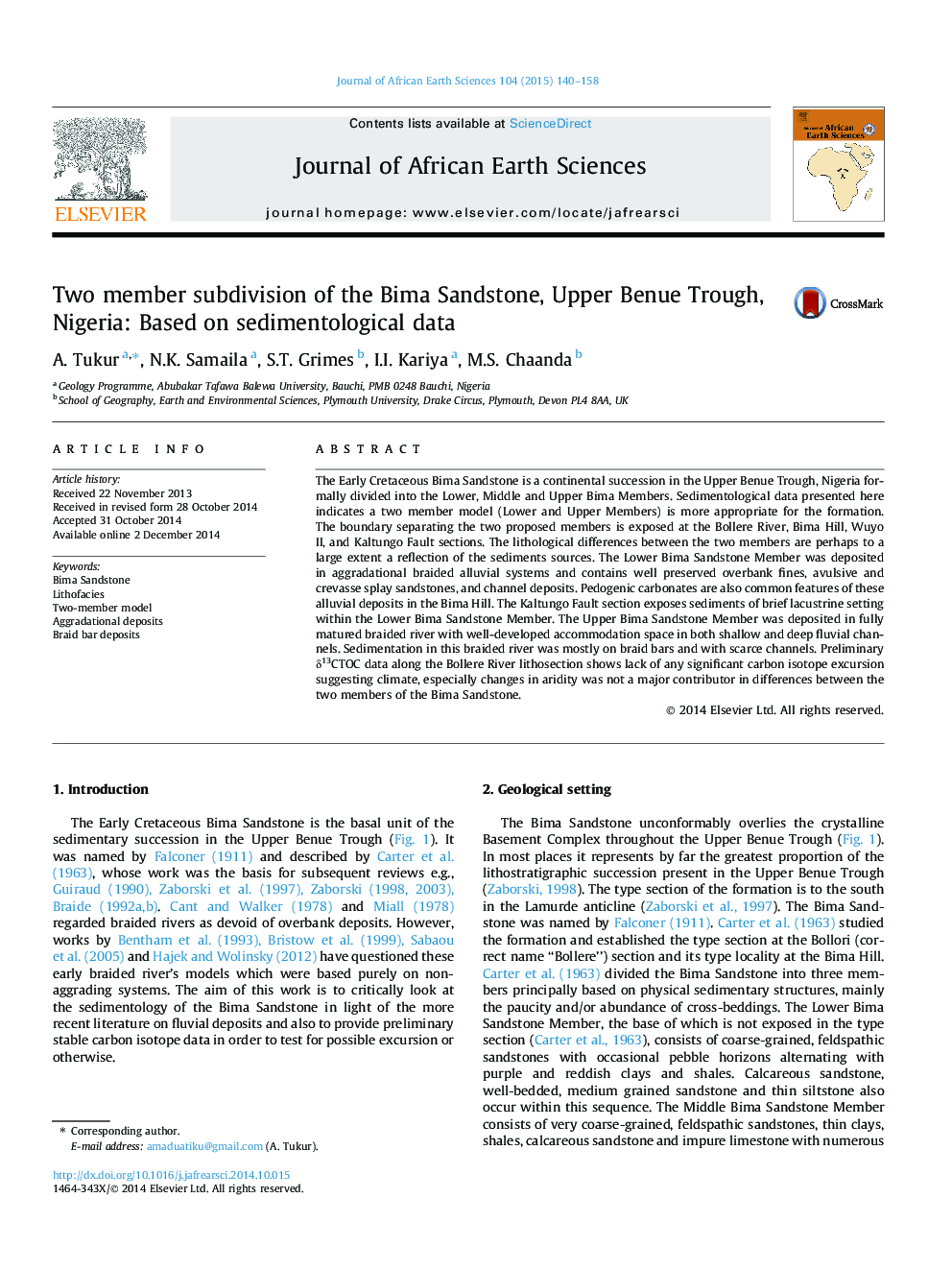| Article ID | Journal | Published Year | Pages | File Type |
|---|---|---|---|---|
| 4728545 | Journal of African Earth Sciences | 2015 | 19 Pages |
•We studied the Bima Sandstone in light of current literature on fluvial deposits.•Lithofacies making the formation were clearly identified.•Problems in three member model of the Bima Sandstone also identified.•Two member models proposed for the Bima Sandstone, Benue Trough.•Lower aggradational braided alluvial and upper braid bar deposits.
The Early Cretaceous Bima Sandstone is a continental succession in the Upper Benue Trough, Nigeria formally divided into the Lower, Middle and Upper Bima Members. Sedimentological data presented here indicates a two member model (Lower and Upper Members) is more appropriate for the formation. The boundary separating the two proposed members is exposed at the Bollere River, Bima Hill, Wuyo II, and Kaltungo Fault sections. The lithological differences between the two members are perhaps to a large extent a reflection of the sediments sources. The Lower Bima Sandstone Member was deposited in aggradational braided alluvial systems and contains well preserved overbank fines, avulsive and crevasse splay sandstones, and channel deposits. Pedogenic carbonates are also common features of these alluvial deposits in the Bima Hill. The Kaltungo Fault section exposes sediments of brief lacustrine setting within the Lower Bima Sandstone Member. The Upper Bima Sandstone Member was deposited in fully matured braided river with well-developed accommodation space in both shallow and deep fluvial channels. Sedimentation in this braided river was mostly on braid bars and with scarce channels. Preliminary δ13CTOC data along the Bollere River lithosection shows lack of any significant carbon isotope excursion suggesting climate, especially changes in aridity was not a major contributor in differences between the two members of the Bima Sandstone.
